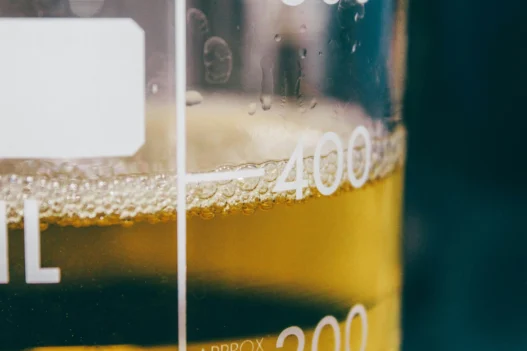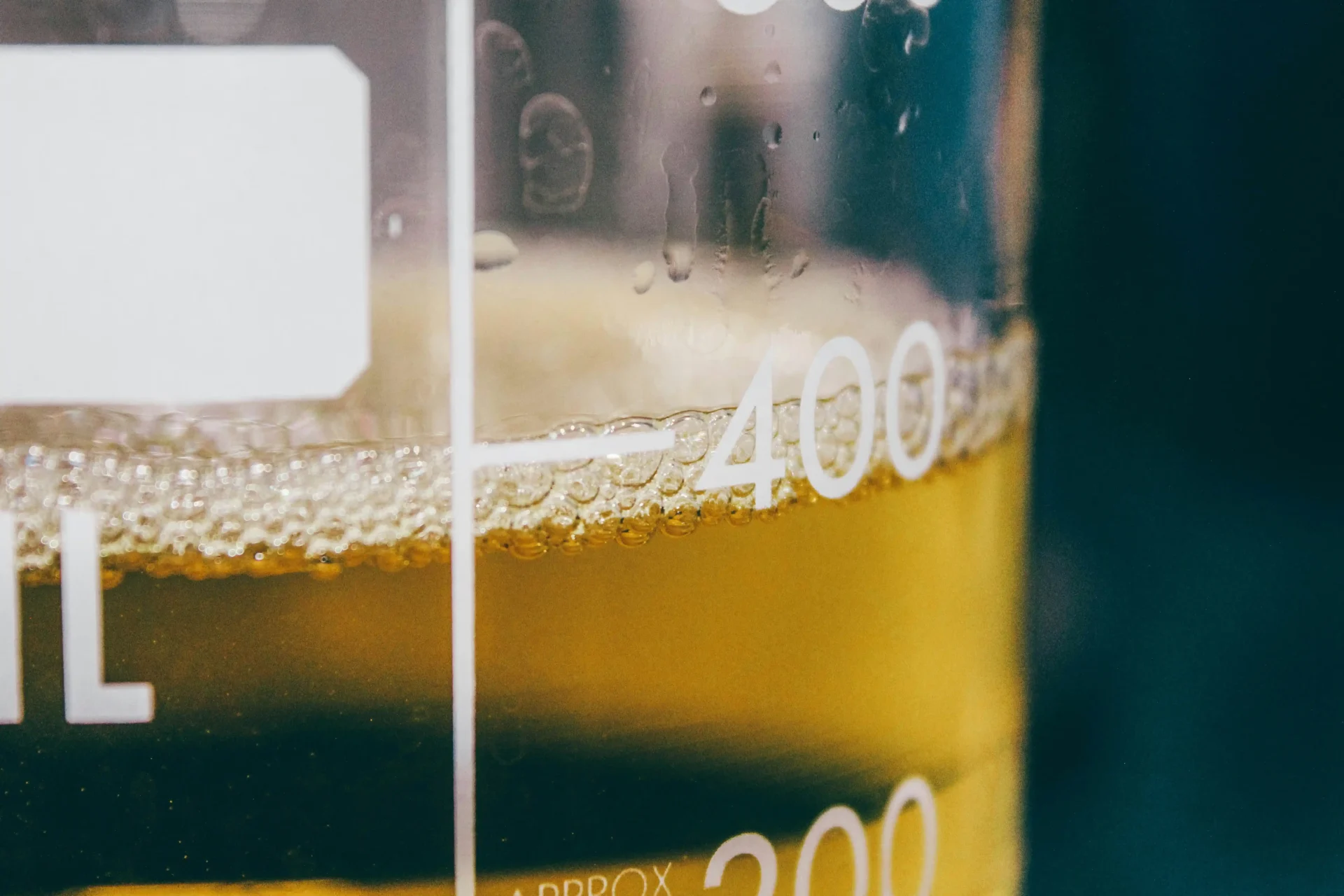5-Aminouracil, a synthetic analog of the nucleobase uracil, is commonly used in scientific research as a mutagen in experiments designed to study genetic mutations and the processes of DNA replication and repair. While its relevance to everyday life may not be readily apparent, understanding the effects of mutagens like 5-Aminouracil can provide valuable insights into how our genetic material functions and the potential risks associated with exposure to mutagenic substances in our environment. Additionally, research involving 5-Aminouracil may contribute to advances in fields such as medicine, agriculture, and environmental science by shedding light on the mechanisms underlying genetic diseases, crop improvement strategies, and the impacts of pollution on living organisms.
Table of Contents:
- 💡 Commercial Applications
- ⚗️ Chemical & Physical Properties
- 🏭 Production & Procurement
- ⚠️ Safety Considerations
- 🔬 Potential Research Directions
- 🧪 Related Compounds
💡 Commercial Applications
5-Aminouracil, also known as 5-AU, is primarily used in the commercial and industrial sectors as a starting material for the synthesis of various chemicals. It is commonly employed in the production of pharmaceuticals, agrochemicals, and research chemicals.
In the pharmaceutical industry, 5-Aminouracil is utilized in the synthesis of antiviral and antitumor agents due to its ability to inhibit enzymes involved in nucleic acid synthesis. It is also used in the development of various diagnostic tools for detecting genetic disorders.
In the field of medication, 5-Aminouracil has demonstrated potential therapeutic effects in the treatment of certain inflammatory conditions. Research studies have shown that it possesses anti-inflammatory properties, making it a promising candidate for the development of novel drugs targeting inflammatory diseases.
⚗️ Chemical & Physical Properties
5-Aminouracil is a white crystalline solid with no distinct odor. It is a derivative of uracil and is commonly used in biochemical research.
The molar mass of 5-Aminouracil is 127.1 g/mol, with a density of 1.61 g/cm³. In comparison to common food items, 5-Aminouracil has a higher molar mass and density than many organic molecules found in food.
5-Aminouracil has a melting point of 275-280°C and a boiling point of 280-290°C. These values are much higher than those of most common food items, which typically have melting and boiling points below 100°C.
5-Aminouracil is sparingly soluble in water and has a low viscosity. Compared to common food items, it is less soluble in water and generally has a lower viscosity.
🏭 Production & Procurement
5-Aminouracil, also known as Urazole or 5-Amino-2,4(1H,3H)-pyrimidinedione, is a compound commonly used in chemical research and synthesis. Its production typically involves the reaction of urea with hydrazine in the presence of a catalyst, such as oxalic acid, at elevated temperatures. This process yields 5-Aminouracil as a white crystalline solid with a melting point of around 310 degrees Celsius.
The procurement of 5-Aminouracil for research or industrial purposes can be accomplished through specialized chemical suppliers or manufacturers. It is commonly available in bulk quantities or as a pure compound packaged in drums or bags. The compound can be transported safely using standard chemical handling procedures, as it is stable under normal conditions and poses minimal risks to health and environment when handled properly.
In addition to direct procurement from suppliers, 5-Aminouracil may also be synthesized in research laboratories and industrial facilities to meet specific needs. This custom production process allows for the control of purity and yield, ensuring the quality of the compound for use in various applications. Whether obtained from commercial sources or synthesized in-house, the careful handling and storage of 5-Aminouracil are essential to maintain its integrity and usability.
⚠️ Safety Considerations
Safety considerations for 5-Aminouracil include its potential for skin and eye irritation, as well as its harmful effects if ingested or inhaled. It is important to handle this compound with care and utilize appropriate personal protective equipment, such as gloves and goggles, to prevent exposure. Additionally, proper ventilation should be maintained to minimize the risk of inhalation of fumes or dust particles.
Hazard statements for 5-Aminouracil include its classification as a harmful substance if swallowed or inhaled. It may cause skin and eye irritation upon contact, and long-term exposure could potentially lead to adverse health effects. It is crucial to handle this compound with caution and follow proper safety protocols to minimize potential hazards.
Precautionary statements for 5-Aminouracil include avoiding direct contact with the skin, eyes, and clothing. In case of exposure, it is recommended to rinse affected areas thoroughly with water and seek medical attention if necessary. Store this compound in a cool, dry place away from heat sources and incompatible materials to prevent accidents or reactions. Proper disposal methods should be followed to mitigate environmental impact.
🔬 Potential Research Directions
Research on 5-Aminouracil, a derivative of the nucleobase uracil, has shown promising potential in various fields of study. First and foremost, further investigation into its role as an anticancer agent is warranted, given its ability to inhibit DNA synthesis in cancer cells.
Additionally, studies exploring the use of 5-Aminouracil in the development of novel drugs for treating viral infections, such as HIV and hepatitis, are of particular interest. Its ability to interfere with viral replication processes make it a promising candidate for targeted therapies.
Furthermore, research into the application of 5-Aminouracil in agricultural science could provide valuable insights into its potential as a pesticide or herbicide. Its structural similarities to other known compounds with pesticidal properties make it a compelling avenue for exploration.
Moreover, investigations into the potential use of 5-Aminouracil in neuroscience research may yield valuable findings. Its reported neuroprotective effects and ability to modulate neurotransmitter release suggest a possible role in the treatment of neurodegenerative disorders.
Lastly, studies on the environmental impact of 5-Aminouracil and its metabolites are essential for assessing its safety and potential risks. Understanding its persistence in soil and water systems, as well as its potential bioaccumulation in organisms, is crucial for evaluating its overall environmental impact.
🧪 Related Compounds
One similar compound to 5-Aminouracil based upon molecular structure is 6-Aminopurine. This compound contains a purine base with an amino group attached to the sixth carbon atom. Like 5-Aminouracil, 6-Aminopurine is involved in various biological processes such as nucleic acid synthesis and regulation of gene expression.
Another compound with a similar molecular structure to 5-Aminouracil is 5-Aminocytosine. This compound is a derivative of cytosine with an amino group attached to the fifth carbon atom. 5-Aminocytosine can be found in nucleic acids and is important for maintaining genetic information within cells.
One more compound worth mentioning is 5-Aminothymine, which is structurally similar to 5-Aminouracil. This compound is a modified form of thymine with an amino group attached to the fifth carbon atom. Like 5-Aminouracil, 5-Aminothymine plays a role in nucleic acid metabolism and DNA replication.







